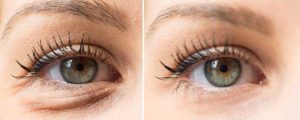 Blepharoplasty is a surgical procedure used to repair droopy eyelids. It is commonly referred to as simply an “eyelid lift,” where excess skin, fat and muscle are removed. Upper eyelid blepharoplasty generally involves the removal of excess skin. Lower eyelid blepharoplasty involves removal of excess fat and only rarely requires the removal of skin.
Blepharoplasty is a surgical procedure used to repair droopy eyelids. It is commonly referred to as simply an “eyelid lift,” where excess skin, fat and muscle are removed. Upper eyelid blepharoplasty generally involves the removal of excess skin. Lower eyelid blepharoplasty involves removal of excess fat and only rarely requires the removal of skin.
The procedure is most often performed on an outpatient basis under local anesthetic. Light sedation may be used to promote relaxation and decrease tension. Blepharoplasty may be done at an outpatient surgery center or in the plastic surgeon’s office.
The upper lid procedure takes approximately one hour. The lower lid surgery takes between one and two hours. There may be some minor bruising or swelling for a few days after the surgery. Most people can return to work within seven days. Complete recovery takes between two and four weeks with all signs of the procedure no longer visible.
Benefits of Blepharoplasty
The main benefit to blepharoplasty is aesthetic. Those who undergo the procedure sport a younger look which increases their self-confidence and self-esteem. Those who had impaired vision due to the excessive skin drooping and blocking their vision are enthusiastic at having their peripheral vision restored.
Risks of Blepharoplasty
The risks are limited and generally depend on the patient’s general health. Bruising and redness following surgery are common. Slight discomfort may be easily controlled with eye drops, cold compresses and medication prescribed by the surgeon.